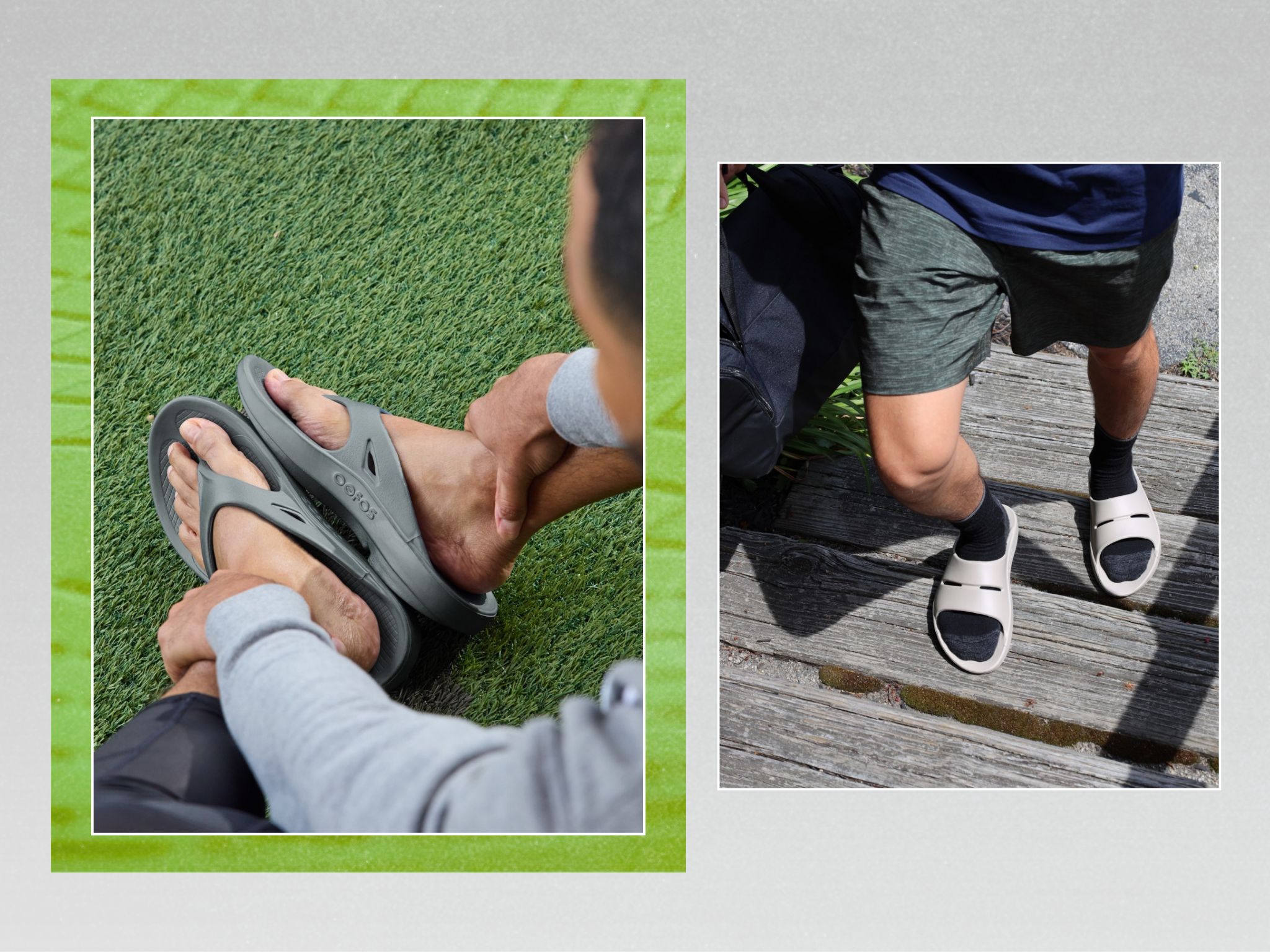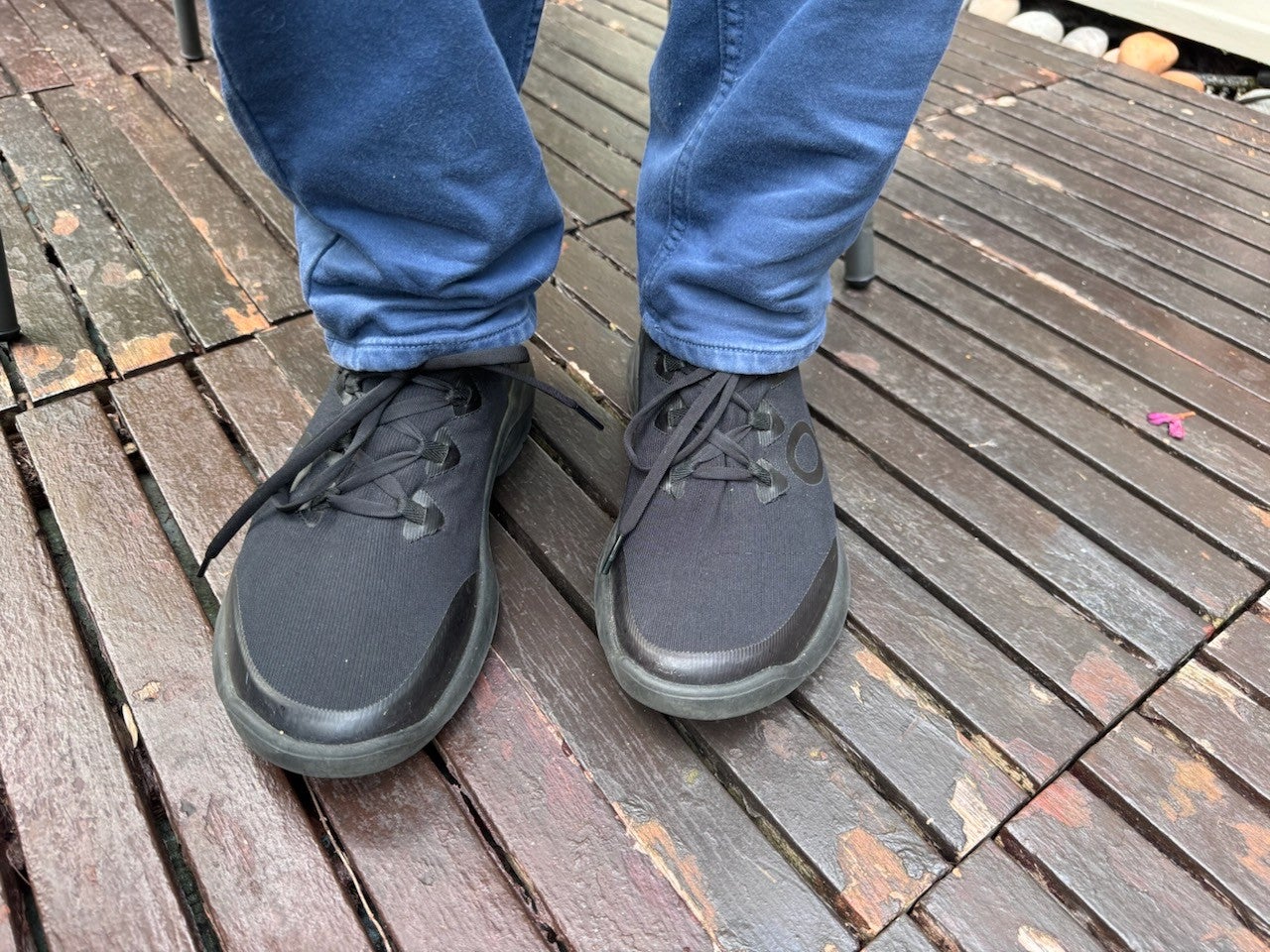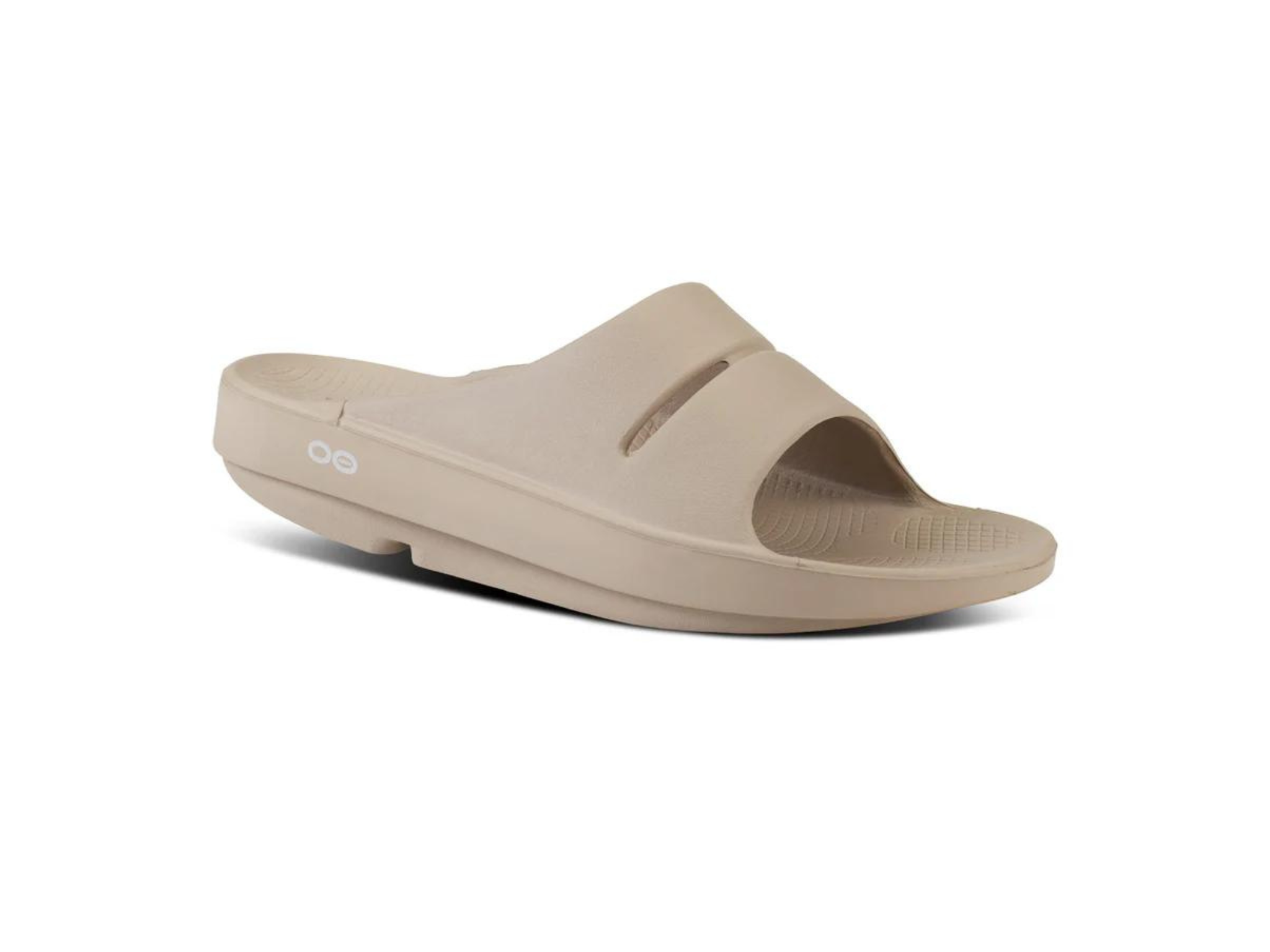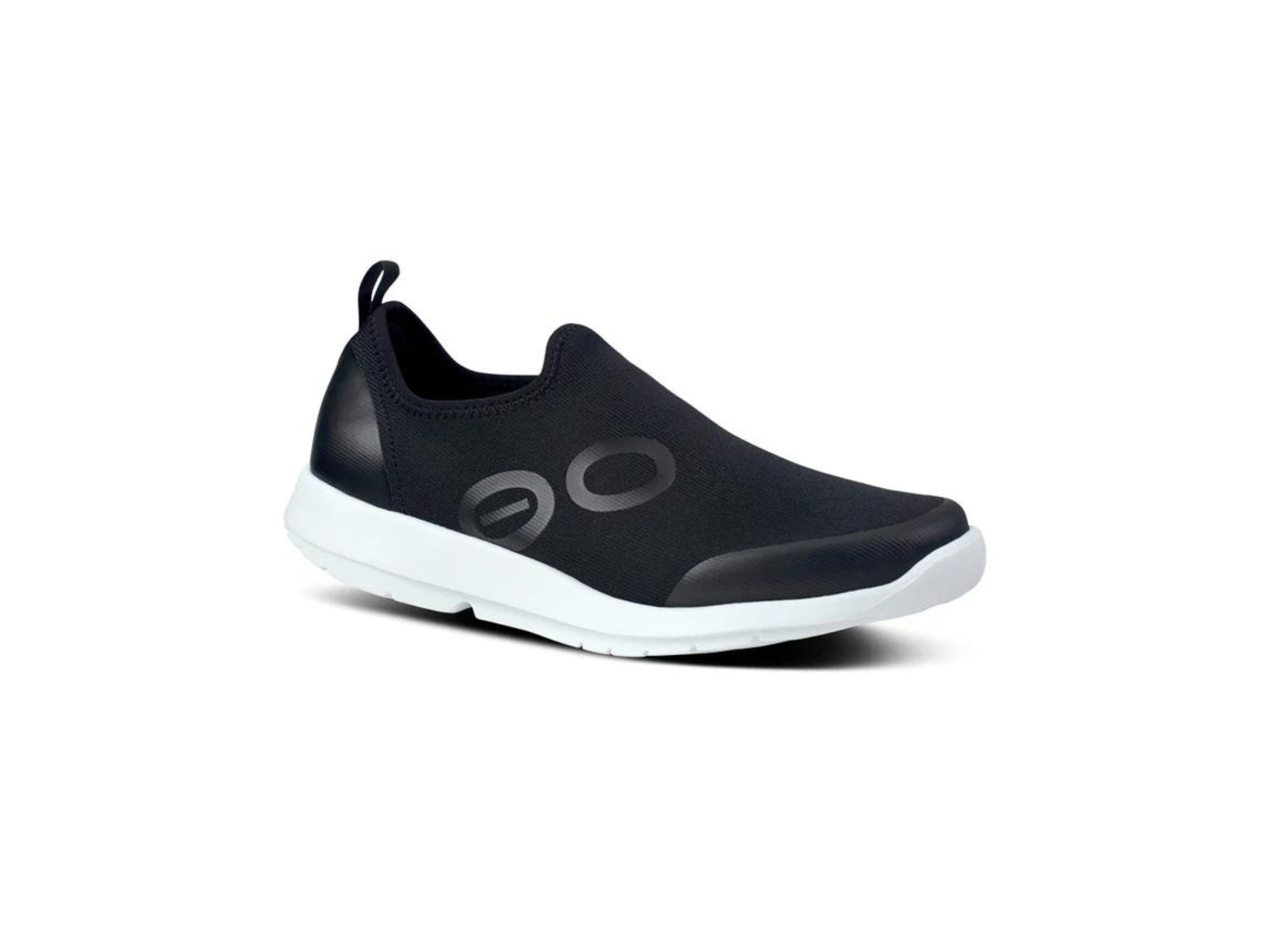These shoes cured my chronic foot pain in weeks – I asked the brand’s co-founder how they did it
While many of us might opt for Birkenstocks, I opted to try OOFOS

Your support helps us to tell the story
From reproductive rights to climate change to Big Tech, The Independent is on the ground when the story is developing. Whether it's investigating the financials of Elon Musk's pro-Trump PAC or producing our latest documentary, 'The A Word', which shines a light on the American women fighting for reproductive rights, we know how important it is to parse out the facts from the messaging.
At such a critical moment in US history, we need reporters on the ground. Your donation allows us to keep sending journalists to speak to both sides of the story.
The Independent is trusted by Americans across the entire political spectrum. And unlike many other quality news outlets, we choose not to lock Americans out of our reporting and analysis with paywalls. We believe quality journalism should be available to everyone, paid for by those who can afford it.
Your support makes all the difference.If you’ve never heard of ‘recovery footwear’, you’re not alone. But the description is clear enough: muscles, bones and connective tissue need to rest and that goes for the feet too. Athletes, and the rest of us, need to take recovery seriously, to improve fitness or to deal with injuries.
I had plantar fasciitis last year – if you’ve had it, you’ll be squirming empathetically right now. If you haven’t, it’s a pain in the connective tissue which supports the arch of the foot. You can’t do much to get rid of it except practise patience.
But while many of us might opt for Birkenstocks, renowned for their support, I opted to try OOFOS, a brand garnering recognition for its secret weapon: OOfoam
This unique foam sits in every pair of OOFOS shoes and, the company claims, absorbs 37 per cent more impact than traditional foams in other footwear. When OOfoam is paired with the patented footbed which aims to cradle and support arches, it can reduce energy exertion in the ankles by up to 47 per cent, says the brand.
To be clear, the company’s single-minded purpose is to help you recover. Unlike regular trainers which offer a bounce that spurs you on in your exertions, OOfoam is no good for running in. These shoes are less about boosting your movement and more about impact absorption and control.

When a friend recommended I go to a sports shoe store and ask for this brand I’d never heard of and could scarcely pronounce, I was sceptical. The Boston-based company has a wide range of shoes, sliders, mules and sandals so I opted for the sliders, and they worked. In weeks, every trace of pain had gone. Actually, as soon as I put the OOFOS sliders on, the pain I had walking barefoot or in trainers or in almost any shoes, was palpably lessened.
I mentioned this to Lou Panaccione, co-founder and CEO of OOFOS, whom I met to talk about the brand’s innovations in the recovery space. Panaccione is relaxed and friendly, more affable and less cautious in what he says than most CEOs I’ve met. He has an appealingly understated certainty that his products just work. And he’s quietly passionate, telling me, “Our job isn’t about making footwear, it’s about making people feel better.”
He is no stranger to the help that OOfoam can offer and saw the effect early on in the company’s life. “One of the main things we were seeing was [that] people with plantar fasciitis, which can be difficult to heal, were immediately getting better just by wearing OOFOS. At that point, all we knew was OOfoam had more impact-absorbing qualities.”
Unlike athletic shoes which have a resiliency benefit – great if you want to run as fast as you can and perform at your top level – OOFOS shoes reduce stress on your body with a unique surface that absorbs the impact of your foot hitting the ground.
“You need impact absorption and slow rebound. Which is what a natural surface does,” explains Panaccione. “We used to do a demonstration with a golf ball. If you drop a golf ball on a hard surface it’s going to bounce fairly high. If you drop it on a natural surface, the beach or a grass surface it’s not going to bounce this high because it’s absorbent. When we would do the golf ball test on OOfoam, it would react like a natural surface. It wouldn’t bounce because it’s absorbing your impact. If you drop it on a resilient foam that’s in most shoes, it’s going to bounce higher. We intuitively felt like people wearing athletic shoes just for comfort could get more benefit with OOFoam technology.”

Panaccione has spent more than 40 years in the footwear industry, with stints at Nike and Reebok so was already very experienced when he had the Eureka moment. However, the creation of OOFOS’s unique technology was a culmination of both expertise and inspiration.
“We were working with a chemist in South Korea on some other things,” he tells me. “We saw he was fooling around with this impact-absorbing foam. He had been providing foam for football helmets and the foam provided the impact of absorption as a protective element. This guy was thinking, ‘people in my factory are standing on their feet all day, and this could help them’. He saw it could be applicable to footwear and we said we think this has really got some potential.”
This seemingly serendipitous moment of discovery has led to OOFOS growing to meet the needs of those who need it most. “We ground it with speciality retailers who can really talk to their customers and help them understand the benefits,” explains Panaccione. The shoes are currently available in stores like Cotswold Outdoors, places where customers know their needs and can seek out high-performance outdoor and activewear with the promise of expert advice.
The sensation of putting on the shoes was what sold me on them. But I wondered how difficult it is to tell a story like that to other potential buyers who might benefit, especially online. It’s hard to explain a feeling and Panaccione agrees. “You have to experience a feeling,” he says. “So that’s why for us, it’s so important to let people try on our product. One of our core values is experiential. We try to create those opportunities as much as we can. Most of our business is done online because that’s the way people shop, so you have to try to communicate your uniqueness. [But] people hear it differently if someone else is giving the message, especially if it’s a friend, say.”

I personally discovered the product by word of mouth and these days, that’s an essential part of the experience of shopping for something that will ultimately support and heal your body. OOFOS shoes might not yet rival the trainers adorning the feet of those front row at Fashion Week – there was initially a small range of styles and colours and recovery footwear works well when there’s a wider sole. But the company’s latest designs cleverly use colour and edging to make them look more relaxed and less worthy. And there’s more to come, with plans for shoes to work in colder climates and broader styles. “The thing we won’t compromise on,” Panaccione says, “is the way we apply the technology.”
The co-founder recognises there’s a way to go: “We’re still not at a high level of brand awareness, but we’re higher than we were, and I think we’re at a point now where we can really grow the business. For recovery footwear, we pioneered this category, and we’re leading it.” Other companies are joining the space and Panaccione says he welcomes the competition, saying that he hasn’t yet seen competitors matching the recovery benefit. “I call it a recovery benefit, but it’s more than recovery. It’s a health and wellbeing benefit.”
OOFOS sliders cost around £50 and sportier shoes are available from around £125 and are available to buy on Oofos.co.uk
Join our commenting forum
Join thought-provoking conversations, follow other Independent readers and see their replies
Comments